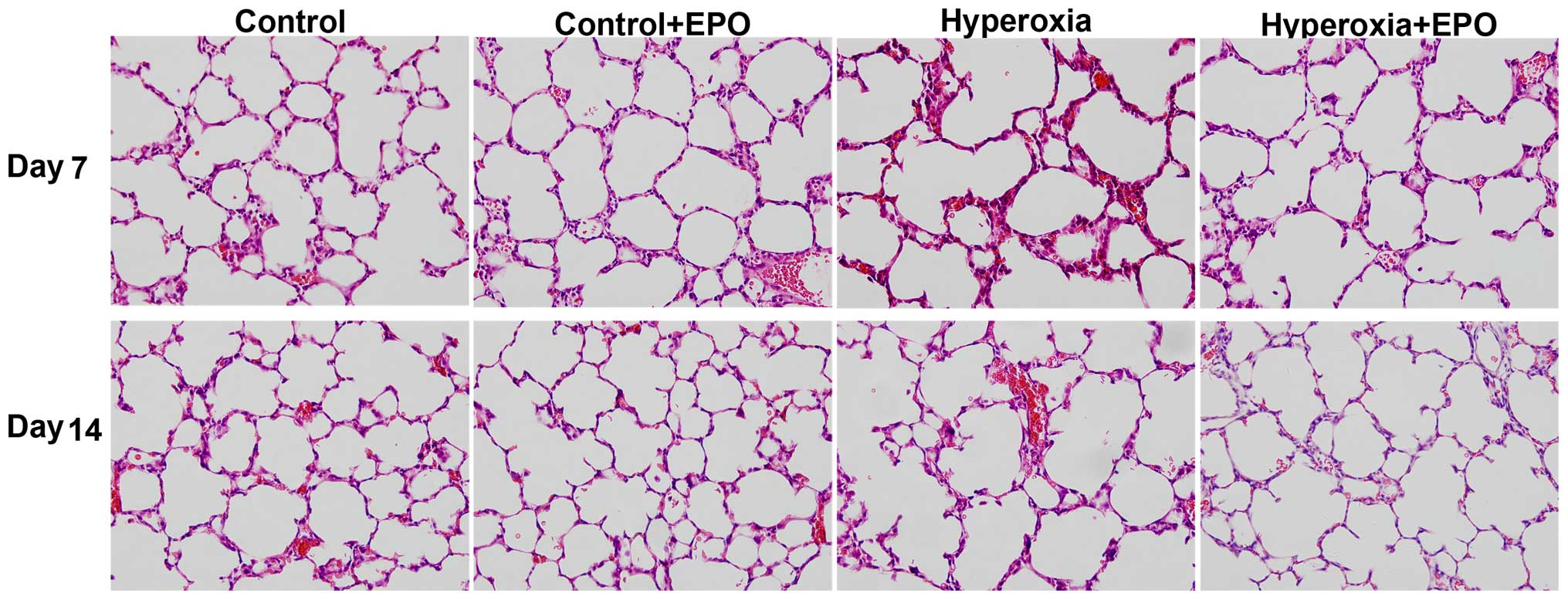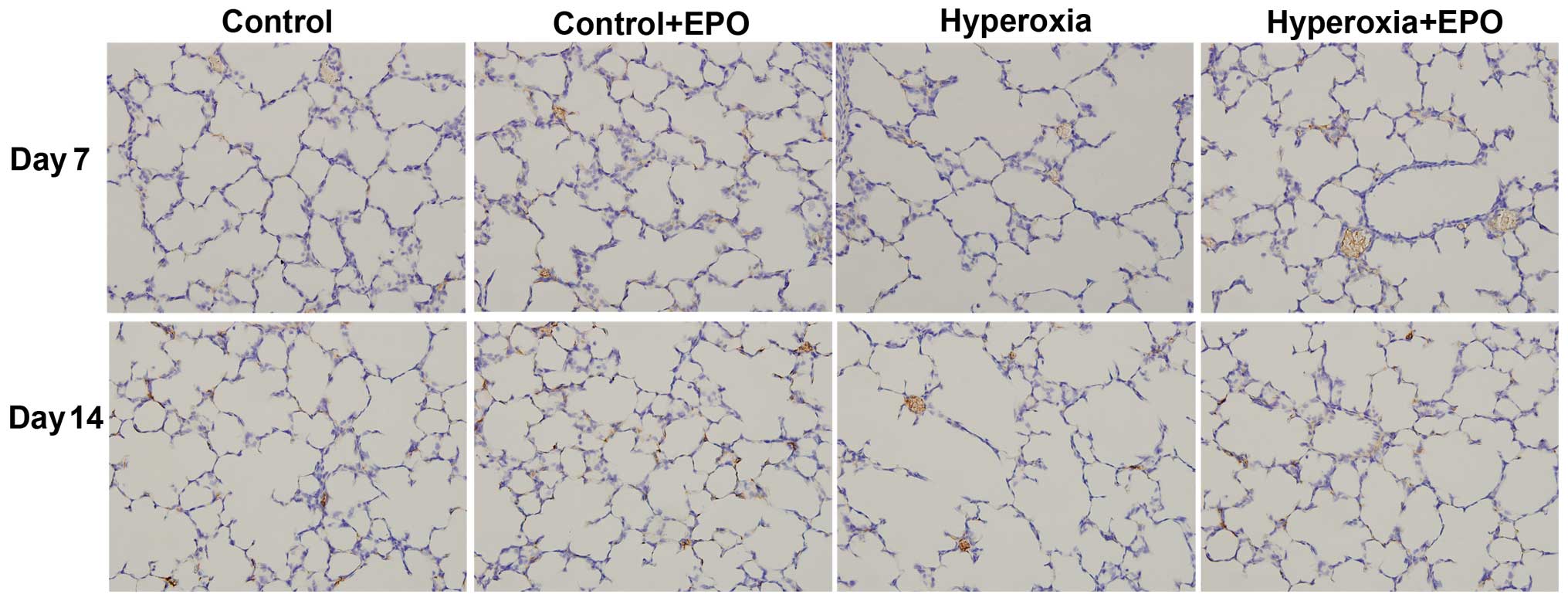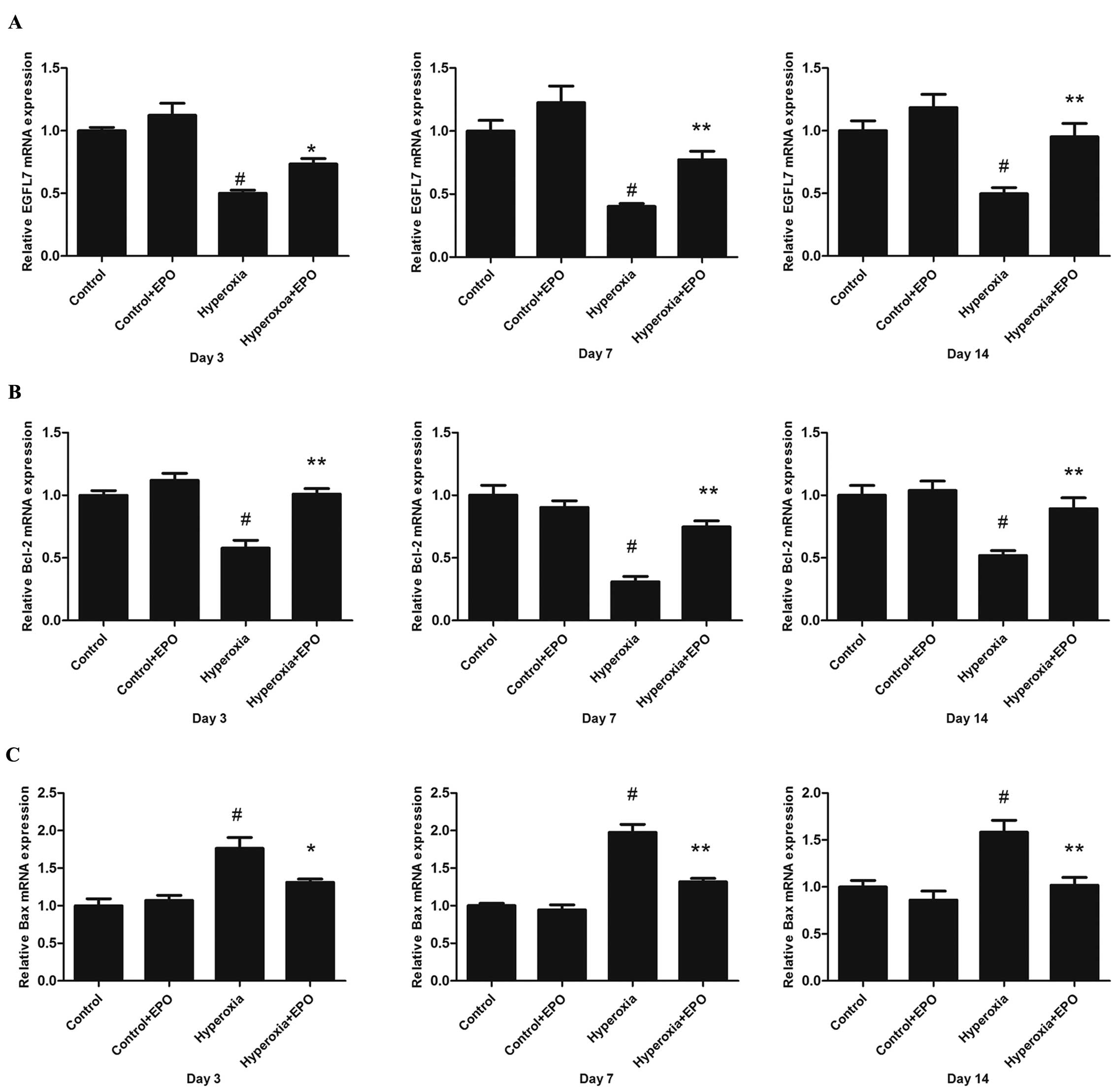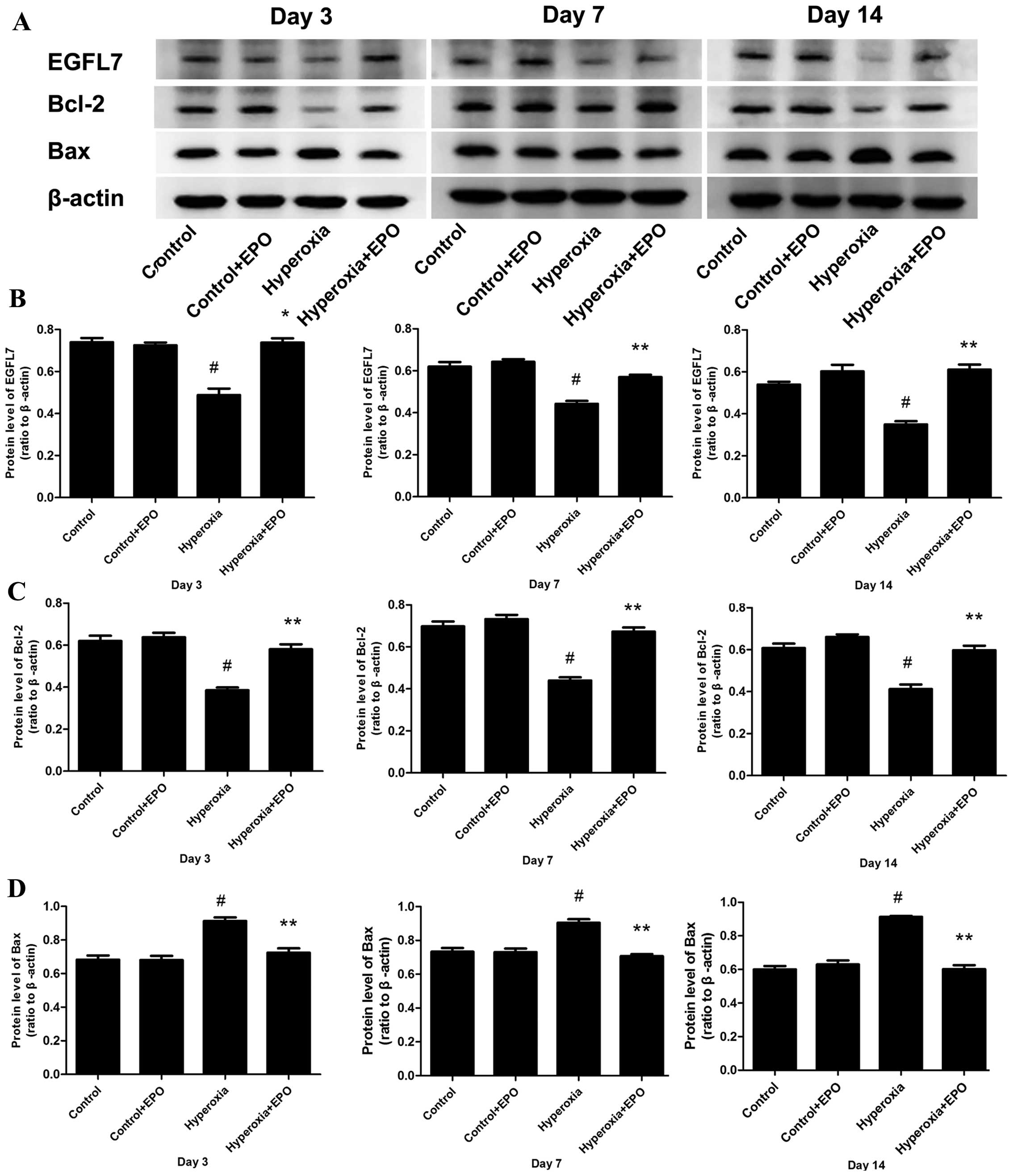|
1
|
Li C, Fu J, Liu H, Yang H, Yao L, You K
and Xue X: Hyperoxia arrests pulmonary development in newborn rats
via disruption of endothelial tight junctions and downregulation of
Cx40. Mol Med Rep. 10:61–67. 2014.PubMed/NCBI
|
|
2
|
Trembath A and Laughon MM: Predictors of
bronchopulmonary dysplasia. Clin Perinatol. 39:585–601. 2012.
View Article : Google Scholar : PubMed/NCBI
|
|
3
|
Lal CV and Ambalavanan N: Genetic
predisposition to bronchopulmonary dysplasia. Semin Perinatol.
39:584–591. 2015. View Article : Google Scholar : PubMed/NCBI
|
|
4
|
Northway WH Jr, Rosan RC and Porter DY:
Pulmonary disease following respirator therapy of hyaline-membrane
disease. Bronchopulmonary dysplasia. N Engl J Med. 276:357–368.
1967. View Article : Google Scholar : PubMed/NCBI
|
|
5
|
Shivanna B, Zhang S, Patel A, Jiang W,
Wang L, Welty SE and Moorthy B: Omeprazole attenuates pulmonary
aryl hydrocarbon receptor activation and potentiates
hyperoxia-induced developmental lung injury in newborn mice.
Toxicol Sci. 148:276–287. 2015. View Article : Google Scholar : PubMed/NCBI
|
|
6
|
Jakkula M, Le Cras TD, Gebb S, Hirth KP,
Tuder RM, Voelkel NF and Abman SH: Inhibition of angiogenesis
decreases alveolarization in the developing rat lung. Am J Physiol
Lung Cell Mol Physiol. 279:L600–L607. 2000.PubMed/NCBI
|
|
7
|
Remesal A, Pedraz C, San Feliciano L and
Ludeña D: Pulmonary expression of vascular endothelial growth
factor (VEGF) and alveolar septation in a newborn rat model exposed
to acute hypoxia and recovered under conditions of air or
hyperoxia. Histol Histopathol. 24:325–330. 2009.PubMed/NCBI
|
|
8
|
Chang M, Bany-Mohammed F, Kenney MC and
Beharry KD: Effects of a superoxide dismutase mimetic on biomarkers
of lung angiogenesis and alveolarization during hyperoxia with
intermittent hypoxia. Am J Transl Res. 5:594–607. 2013.PubMed/NCBI
|
|
9
|
Xu D, Perez RE, Ekekezie II, Navarro A and
Truog WE: Epidermal growth factor-like domain 7 protects
endothelial cells from hyperoxia-induced cell death. Am J Physiol
Lung Cell Mol Physiol. 294:L17–L23. 2008. View Article : Google Scholar : PubMed/NCBI
|
|
10
|
Wang XH and Huang WM: Astragalus
polysaccharides exert protective effects in newborn rats with
bronchopulmonary dysplasia by upregulating the expression of EGFL7
in lung tissue. Int J Mol Med. 34:1529–1536. 2014.PubMed/NCBI
|
|
11
|
Ozer EA, Kumral A, Ozer E, Yilmaz O, Duman
N, Ozkal S, Koroglu T and Ozkan H: Effects of erythropoietin on
hyperoxic lung injury in neonatal rats. Pediatr Res. 58:38–41.
2005. View Article : Google Scholar : PubMed/NCBI
|
|
12
|
Luo W, Hu L and Wang F: The protective
effect of erythropoietin on the retina. Ophthalmic Res. 53:74–81.
2015.PubMed/NCBI
|
|
13
|
Wang XL, Fu JH and Xue XD: Effects of
hyperoxia on erythropoietin receptor expression in lung development
of neonatal rats. Zhonghua Er Ke Za Zhi. 49:361–366. 2011.(In
Chinese). PubMed/NCBI
|
|
14
|
Lee JH, Sung DK, Koo SH, Shin BK, Hong YS,
Son CS, Lee JW, Chang YS and Park WS: Erythropoietin attenuates
hyperoxia-induced lung injury by down-modulating inflammation in
neonatal rats. J Korean Med Sci. 22:1042–1047. 2007. View Article : Google Scholar : PubMed/NCBI
|
|
15
|
Martin CR, Zaman MM, Gilkey C, Salguero
MV, Hasturk H, Kantarci A, Van Dyke TE and Freedman SD: Resolvin D1
and lipoxin A4 improve alveolarization and normalize septal wall
thickness in a neonatal murine model of hyperoxia-induced lung
injury. PLoS One. 9:e987732014. View Article : Google Scholar : PubMed/NCBI
|
|
16
|
Livak KJ and Schmittgen TD: Analysis of
relative gene expression data using real-time quantitative PCR and
the 2(−Delta Delta C(T)) Method. Methods. 25:402–408. 2001.
View Article : Google Scholar : PubMed/NCBI
|
|
17
|
Carrera P, Di Resta C, Volonteri C,
Castiglioni E, Bonfiglio S, Lazarevic D, Cittaro D, Stupka E,
Ferrari M and Somaschini M: BPD and Genetics Study Group: Exome
sequencing and pathway analysis for identification of genetic
variability relevant for bronchopulmonary dysplasia (BPD) in
preterm newborns: A pilot study. Clin Chim Acta 451 (Pt A). 39–45.
2015. View Article : Google Scholar
|
|
18
|
Spiteller G: The important role of lipid
peroxidation processes in aging and age dependent diseases. Mol
Biotechnol. 37:5–12. 2007. View Article : Google Scholar : PubMed/NCBI
|
|
19
|
Dang H, Wang S, Yang L, Fang F and Xu F:
Upregulation of Shh and Ptc1 in hyperoxia induced acute lung injury
in neonatal rats. Mol Med Rep. 6:297–302. 2012.PubMed/NCBI
|
|
20
|
D'Angio CT and Maniscalco WM: The role of
vascular growth factors in hyperoxia-induced injury to the
developing lung. Front Biosci. 7:d1609–d1623. 2002. View Article : Google Scholar : PubMed/NCBI
|
|
21
|
Asikainen TM, Ahmad A, Schneider BK, Ho
WB, Arend M, Brenner M, Günzler V and White CW: Stimulation of
HIF-1alpha, HIF-2alpha, and VEGF by prolyl 4-hydroxylase inhibition
in human lung endothelial and epithelial cells. Free Radic Biol
Med. 38:1002–1013. 2005. View Article : Google Scholar : PubMed/NCBI
|
|
22
|
Bany-Mohammed FM, Slivka S and Hallman M:
Recombinant human erythropoietin: Possible role as an antioxidant
in premature rabbits. Pediatr Res. 40:381–387. 1996. View Article : Google Scholar : PubMed/NCBI
|
|
23
|
Ding L, Wu BQ, Huang JJ, Liu ZP and Chen
L: Effect of erythropoietin on apoptosis following hyperoxic lung
injury in neonatal rats. Zhongguo Dang Dai Er Ke Za Zhi.
12:576–579. 2010.(In Chinese). PubMed/NCBI
|
|
24
|
Piedboeuf B, Gamache M, Frenette J,
Horowitz S, Baldwin HS and Petrov P: Increased endothelial cell
expression of platelet-endothelial cell adhesion molecule-1 during
hyperoxic lung injury. Am J Respir Cell Mol Biol. 19:543–553. 1998.
View Article : Google Scholar : PubMed/NCBI
|
|
25
|
Privratsky JR and Newman PJ: PECAM-1:
Regulator of endothelial junctional integrity. Cell Tissue Res.
355:607–619. 2014. View Article : Google Scholar : PubMed/NCBI
|
|
26
|
Matsuda Y, Hagio M and Ishiwata T: Nestin:
A novel angiogenesis marker and possible target for tumor
angiogenesis. World J Gastroenterol. 19:42–48. 2013. View Article : Google Scholar : PubMed/NCBI
|
|
27
|
Oltvai ZN, Milliman CL and Korsmeyer SJ:
Bcl-2 heterodimerizes in vivo with a conserved homolog, Bax, that
accelerates programmed cell death. Cell. 74:609–619. 1993.
View Article : Google Scholar : PubMed/NCBI
|













